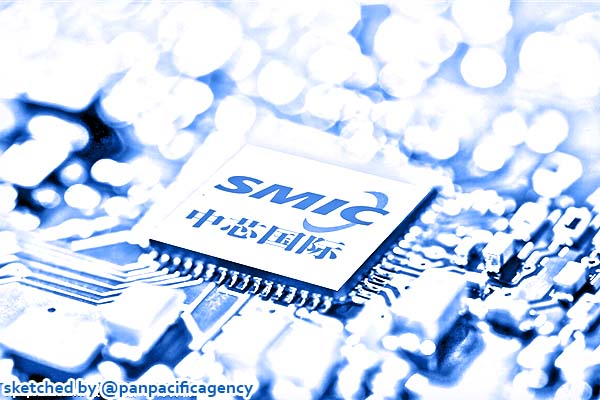Top ten semiconductor buyers increased chip spending by 25 per cent in 2021: Gartner

The logo of Semiconductor Manufacturing International Corporation. [Photo/Sipa]. Sketched by the Pan Pacific Agency.
NEW DELHI, Feb 7, 2022, HBL. The top ten global original equipment manufacturers (OEMs)’ increased their chip spending by 25.2 per cent and accounted for 42.1 per cent of the total market in 2021 even as production was disrupted by the Covid-19 pandemic and the semiconductor shortage, according to preliminary results by Gartner, Inc., The Hindu Business Line reported.
“Semiconductor vendors shipped more chips in 2021, but the OEMs’ demand was far stronger than the vendors’ production capacity,” said Masatsune Yamaji, research director at Gartner.
“The semiconductor shortage prevented OEMs from increasing production not just of vehicles but also various electronic equipment types, including smartphones and video game consoles. However, the chip shortage significantly increased selling prices, which meant OEMs spent much more on semiconductor procurement in 2021 than in prior years,” Gartner said in its report.
The average selling prices (ASPs) of semiconductor chips, such as microcontroller units, general-purpose logic integrated circuits (ICs), and a host of application-specific semiconductors, increased by 15 per cent or more in 2021.
“The semiconductor shortage also accelerated OEMs’ double booking and panic buying, causing a huge spike in their semiconductor spending,” said Yamaji.
Top OEMs
Apple and Samsung Electronics have been the top two OEMs since 2011 while swapping ranks through the years.
Huawei struggled to purchase chips, its ranking dropped from third to seventh in 2021.
Other Chinese smartphone OEMs, such as BBK Electronics and Xiaomi, significantly increased their semiconductor spending, successfully compensating for the loss of market share by Huawei in the smartphone market in 2021.
Apple held the top spot with an 11.7 market share. Its overall spending grew 26 per cent. The tech major increased its spending on memory by 36.8 per cent and on non-memory chips by 20.2 per cent in 2021. However, its demand for computing microprocessing units (MPUs) declined owing to the shift to its in-house-designed application processors.
Samsung Electronics, which held the second spot with a 7.8 per cent market share in 2021, grew its spending by 28.5 per cent. Its memory spending increased by 34.1 per cent, while non-memory chip spending grew 23.9 per cent in 2021.
“The increase of memory spending was the result of not just a rise of memory price, but also Samsung’s growth in its target electronic equipment markets, especially the smartphone and solid-state drive (SSD) markets,” the report said.
Lenovo, which held this spot by market share, grew its spending by 32.9 per cent, while BBK Electronics’ spending grew 63.8 per cent between 2020-2021. Dell Technologies, which held the firth spot by market share, grew spending by 25.4 per cent.